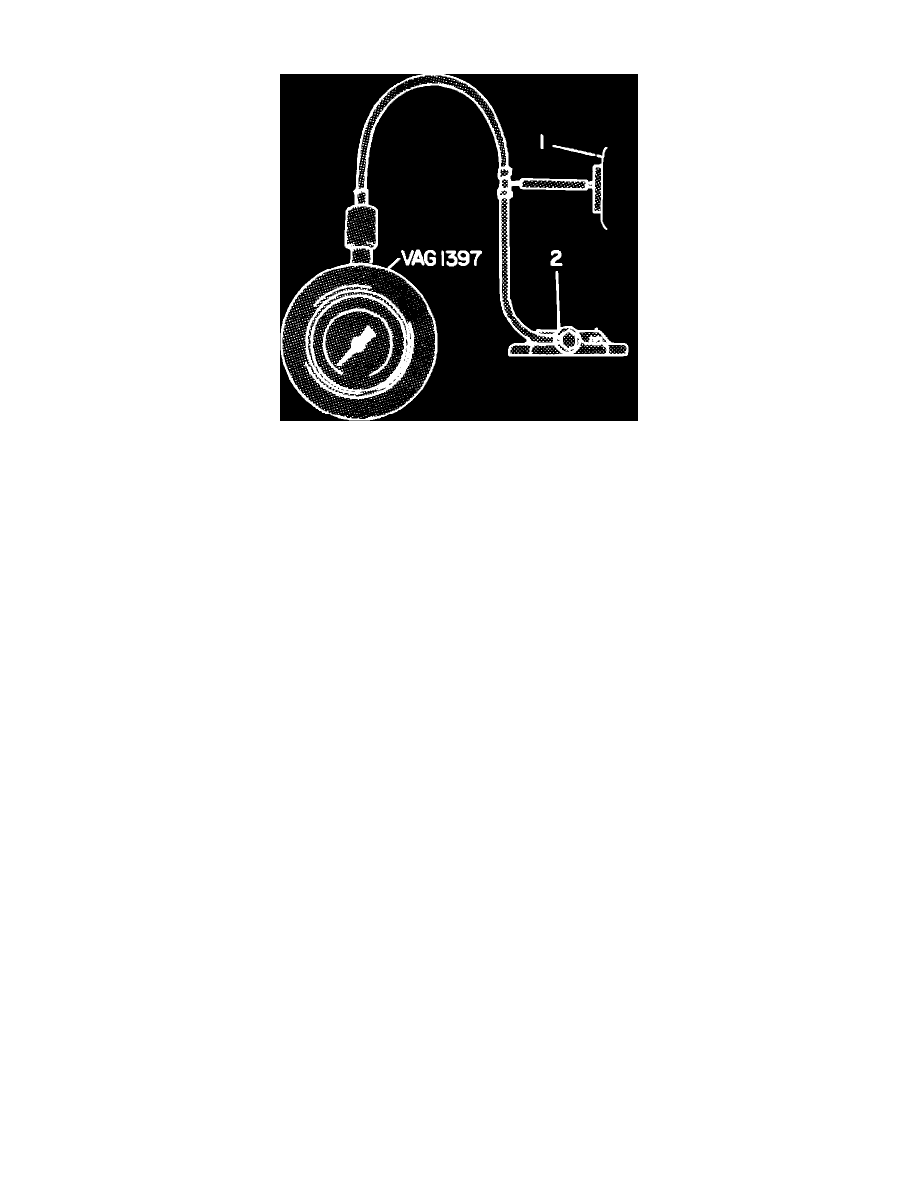Rabbit Hatchback L4-1588cc 1.6L DSL SOHC (1983)

Turbocharger: Testing and Inspection
Fig. 33 Turbocharger boost pressure test connections
1.
Connect a suitable pressure gauge between injection pump and intake pipe, Fig. 33. Position gauge so it is visible from driver's seat. Install a
tachometer to engine. Warm engine to normal operating temperature.
2.
Open gauge stop valve by pushing in direction of gauge dial.
3.
Measure turbocharger boost pressure with engine at full throttle using one of the following methods:
a. Using a dynamometer, measure boost pressure at 4000 RPM in third gear on models equipped with automatic transaxle, or second gear on
models equipped with manual transaxle.
b. On a road test, measure boost pressure while applying brake to hold vehicle speed to 35 miles per hour in second gear on models equipped
with manual transaxle, or first gear on models equipped with automatic transaxle. To make boost pressure reading easier while road
testing, pull gauge stop valve away from gauge dial to lock reading on indicator.
4.
Boost pressure should measure 9.3-10.2 psi (0.64-0.70 bar). If pressure is high, the wastegate is defective and the turbocharger must be replaced.
If pressure is low, proceed to step 5.
5.
Disconnect blow-off valve hose from intake air hose, then block air hose with a 1 inch plug and tighten with a clamp. Repeat boost pressure test
and note reading. If pressure is now within specifications, replace blow-off valve. If pressure is still low, replace turbocharger.
